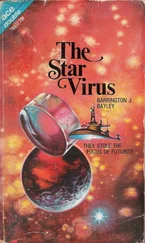The gas chamber wasn’t soundproofed, but the thick glass wall served to muffle any sounds from the inside.
When his wife screamed, Pak looked up and stared at her for what he knew would be the last time. His sons had already collapsed, their slight frames twitching involuntarily as the agent wreaked havoc on their nervous systems. Urine and faeces stained their clothes and the grubby metal plates that formed the floor. Then his wife fell backwards and Pak closed his eyes again. That he couldn’t bear to watch.
Four minutes later the gas flow was switched off and the pumps began purging the chamber. Pak looked up again, at the three pathetic bundles that had once been his family, as strong hands began releasing the straps that held him in the chair. Anger burned inside him, but he knew resistance was completely futile.
Three prisoners wearing grey overalls and gas masks opened the door of the chamber and dragged out the bodies. A sharp command brought Pak to his feet, and he shuffled round to the chamber entrance, Kim walking beside him.
‘For you, we’re going to use tabun,’ he explained. ‘It’s not quite as fast-acting as soman, so you’ll have a little more time to suffer.’
Pak Je-San stepped into the chamber and waited for the door to be closed. He’d resolved to simply sit down close to the injection pipe and inhale as deeply as he could, to finish his life quickly.
Behind him he heard a sudden commotion, and looked round in surprise. The door had slammed shut, but Kim Yong-Su was inside the chamber. The government official was yelling and banging on the door, but the smiles on the faces of the men outside told their own story.
And despite himself, Pak began to laugh.
HMS Illustrious , Yellow Sea
The mood in the Wardroom was subdued. Most officers who weren’t on duty were there, standing or sitting in small groups as they discussed the events of the last few hours. Richter was sitting in one corner, half a cup of coffee on the table in front of him, and still wearing flying overalls, a technical breach of etiquette that no one appeared too concerned about. He was wondering if he could be bothered to change before lunch. Or even to eat lunch. All he really wanted to do was sleep.
When the communications rating appeared in the doorway, Richter knew almost instinctively that he was the addressee on the signal the man was holding. He got up, walked over towards him, signed the Classified Documents Register, and ripped open the envelope. The message was short and to the point, and Richter knew immediately that he wasn’t going to be getting much sleep in the near future. Or, at least, not on this ship.
RICHTER, ILLUSTRIOUS. RETURN LONDON IMMEDIATE. OVERRIDE PRIORITY FRANTIC . SIMPSON, FOE.
Thirty minutes later Richter was escorted onto the flight deck by the duty SE rating. They stopped just abeam the Merlin’s cargo door and waited for the pilot, Craig Howe, to give permission for him to board the aircraft. The moment the marshaller waved him forward, he walked across, ducking as he moved under the rotor disk.
As he strapped himself into the seat, about to lift off for Seoul, Richter wondered just what the hell Simpson had got them involved in now. He’d only heard the ‘FRANTIC’ priority code-word used once since he’d been at FOE, and had hoped he’d never hear it again. But, he reflected, leaning back and finally closing his eyes, he supposed he’d find out soon enough.
James Barrington, a trained military pilot, has worked in the secretive world about which he writes. His previous Paul Richter thrillers were Overkill and Pandemic .
OVERKILL
PANDEMIC
A substantial part of this novel is set on board Her Majesty’s Ship Illustrious , a Royal Navy aircraft carrier on which I served for some two years. Times change, memories fade, and subtle alterations are made to such vessels, and I’m indebted to Lieutenant Craig Howe, Royal Navy, a front-line pilot on 814 Squadron, both for reminding me of some things I should have remembered, and pointing out the more significant of those changes that have taken place on board this ship. Craig makes a couple of cameo appearances in this novel, and even gets to survive the experience!
I’d also like to thank Lieutenant Commander Paul Tremelling, Royal Navy, for his invaluable and expert guidance on modern Harrier operations and weapons – the GR9 is a far cry from the old FA2 version.
Finally, I must thank my good friend and wonderful agent, Luigi Bonomi, for his continued enthusiasm and encouragement, Peter Lavery for his exhaustive and talented editing, and all the rest of the team at Macmillan.
And, as ever, Sally.
James Barrington Principality of Andorra, 2007
EMP and the MiG-25 Foxbat
The existence of the electromagnetic pulse caused by the detonation of a nuclear weapon was not suspected by the American scientific community until 9 July 1962, as a direct result of a classified experiment called Starfish Prime, itself part of a series of tests code-named Operation Dominic. Utilizing a Thor launch vehicle carrying a W49 warhead, this was a high-yield – 1.4 megatons – nuclear test conducted at an altitude of around 250 miles over the Pacific Ocean, which had significant, and previously unsuspected, secondary effects.
Some one thousand miles distant in Hawaii, power lines fused; televisions, radios and other electrical equipment burnt out; and hundreds of street lamps failed. On other Pacific islands, microwave links were destroyed, cutting telephone connections. Only when this damage was analysed did American scientists realize the potential damage that a high-altitude nuclear blast could cause to an advanced and technology-dependent society.
The Russians, in contrast, had known about this effect for at least seven years, following their detonation on 22 November 1955 of a 1.6-megaton thermonuclear device code-named RDS-37, and possibly as early as 1953 when they exploded the comparatively low-yield (400 kilotons) Joe 4 weapon.
What is almost certain is that knowledge of the destructive effects of the EMP guided the design of the MiG-25 Foxbat interceptor’s avionics. The Mikoyan-Gurevich bureau’s use of valve technology in this cutting-edge fighter, rather than readily available solid-state electronics, only makes sense in this context.
It is also a fact that there were no existing or planned Western aircraft that could fly at anything like the speed the Foxbat could achieve: one was clocked on radar in the early 1970s by the Israelis at Mach 3.2. Despite this, the MiG-25’s Machmeter was red-lined at Mach 2.5 and, according to Viktor Belenko, if the aircraft’s speed exceeded Mach 2.8 there was a danger the engines would accelerate out of control. This was at least in part because the Tumansky R-15B-300 afterburning turbojets had originally been designed for use in a single-engined and single-use Mach 2+ reconnaissance drone, the Tupolev Tu-123 Yastreb or Hawk.
The Russians have never publicly admitted that the MiG-25 was actually intended to intercept ICBMs, but several unofficial sources have claimed that this was the case.
Camp 22
This is one of about a dozen concentration and slave-labour camps in North Korea, which together hold around 200,000 prisoners. Located near Haengyong in North Hamgyong Province and close to the borders with China and Russia, Camp 22 is the largest, and its description in this novel is accurate.
The ‘crimes’ most of these prisoners have committed would not be considered offences in any other nation. Many are there because they, or one of their relatives, are believed to be critical of the ruling regime or, equally dangerous to Pyongyang, are Christians or support Christianity. And Kim Jong-Il is absolutely determined to stamp out the ‘bad blood’ that causes citizens of his country to entertain such heretical notions: as a matter of course, three entire generations of the criminal’s family will be seized and sent to the North Korean gulag for any such infraction.
Читать дальше












